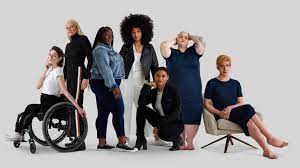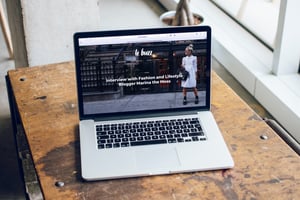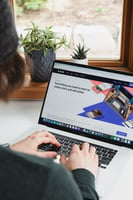It’s no secret that your website is your digital business card. It’s the place where potential...
Why adaptive fashion is a basic human right
Although the fashion industry has recently made many positive and progressive changes regarding diversity, sustainability and inclusion, there is still a large group of people who feel underrepresented: The people with physical and mental disabilities.
Here at Faslet, one of our core values is awareness. In this blog, we want to make our readers aware of why adaptive fashion is a basic human right.
For many people, adaptive fashion is an unfamiliar term. But, unfortunately for 1 billion people, this is the reality. 15% of the world population struggle with some form of disability.

Adaptive fashion
Adaptive clothing is defined as clothing designed for people with disabilities, the elderly and anyone who struggles with dressing themselves. In adaptive fashion, garments are functionally simplified. This means that buttons become magnets, zips and velcro. Small changes like these could be life-changing for many people. However, they often tend to lose their charm.
Now, that 15% is an enormous amount of people that do not feel as confident and happy as they should, because let’s be honest, although adaptive fashion does exist, it sometimes still lacks a mainstream fashion-element, which again makes a distinction.
For far too long, people with both physical and mental disabilities, have been ignored by the mainstream fashion industry. Instead of assuming that they would buy products and clothing that do not meet their needs, it is the responsibility of the fashion industry to make room for adaptive clothing. We are not talking about changes for a small group, but one in five people.
This is no longer just about making the process of getting dressed easier. Many people with disabilities, who also have a great love for fashion or just want to look good, keep getting reminded about their flaws. This does much more to people than we think. Especially people who are mentally not affected are very aware of their shortcomings. Designers cannot only be designers at this point. They have to be engineers with problem solving, innovative, empathetic thinking. And although not everyone with a disability has the desire to buy adaptive clothing, it is promising for a large group of people to see how more and more fashion brands are designing adaptive clothing lines.
Runway of dreams
In 2013, Mindy Sheier founded the organization Runway of Dreams.
Her son, Oliver (18), has muscular dystrophy. MD makes it unable for him to do all the things a young boy should do.
She, a fashion-enthusiast herself, saw how her son, who shared her ambition, struggled everyday.
When he was younger, it was almost impossible to find adaptive clothing which resulted in him having to wear joggers to school every single day, so he could use the restroom without having to ask for help.
It wasn’t only Oliver, who’s self-esteem was tested. She encountered many people during her research into adaptive fashion who suffered the exact same problems.
People missing limbs, suffering from cerebral palsy, or even those who are highly sensitive, told her about their daily difficulties.
Her mission is to educate the fashion industry that adjustements could be made to mainstream clothing for this community that has never been served.
Today, many fashion brands have become aware of the need to serve the disabled population, creating a progressive, modern and above all sustainable fashion industry. Because sustainable fashion is only sustainable when all parties are involved.
Here’s a list of a few adaptive brands that we love!
TH has been working on it for a while, but it’s finally out! An adaptive clothing line that is also professional and stylish. Nice clothing that requires less effort, staying true to the brand’s vibe!

Getting dressed starts with your underwear. But for many people it is not as simple as putting them on one leg at a time. It’s a problem they face every single day. Slick Chicks created the perfect underwear and bras with side clasps for people with mobility impairments.

Not only clothing and undergarments need to be functional. For many wheelchair users, accessoires are often a burden. Ffora offers you great solutions, that are easy to attach to your wheelchair!

Zappos has a wide range of adaptive shoes. Do you wear different sizes, do you need certain soles or do you only wear one shoe because of your disability? Zappos has you covered!
Btw, did you know that Zappos isn’t just for shoes? They can style you from head to toe.

Sources:
The World Bank (2021): Disability Inclusion
https://www.worldbank.org/en/topic/disability#1
Fashion United (2020): Aangepaste mode en de kracht van de persoonlijke touch
Ted (2017): Mindy Sheier | How adaptive clothing empowers people with disabilities
https://www.ted.com/talks/mindy_scheier_how_adaptive_clothing_empowers_people_with_disabilities
Good Housekeeping (2021): 11 best adaptive clothing brands
https://www.goodhousekeeping.com/clothing/g35408937/adaptive-clothing/




